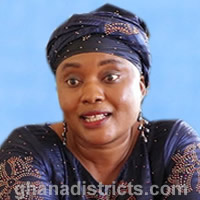Location and Size
The Ada East District is situated in the Eastern part of the Greater Accra Region. It can be located between latitudes 5°45’S and 6°00’N and Longitude 0°20’W and 0°35’E. The total land area of the District is about 289.78 square km, which represents almost 8.93% of the total land size of the Greater Accra Region.
The District shares common boundaries with the Central Tongu District to the North, South Tongu District and Ada West District to the East and West respectively. It is bounded to the south by the Gulf of Guinea, which stretches over 19 kilometres (27.9 miles) from Kewunor to Totope. It is also bounded by the Volta River South–Eastwards extending to the Gulf of Guinea southwards thereby forming an Estuary, about 2 kilometres away from the District capital, Ada-Foah.
The District capital is located at the south-eastern part; about 20km off the Accra-Aflao road, and lies closer to the coast. Other major settlements are Big Ada, Kasseh, Ada-Foah, Totimekope, Ocanseykope and Pute. The location of the District has made it particularly fruitful for local folks to engage in fishing and fish processing as their main economic endeavour for sustained livelihood. The cool breeze from the sea and the crafted horizon combine to give the terrain a perfect definition. However, the corrosive nature of the breeze has rendered most facilities ancient with the related burden of frequent maintenance and replacement.
Natural Resource Environment
TopographyThe District forms the central portions of the Accra plains. The relief is generally gently and undulating, a low plain with heights not exceeding 60 meters (200 ft) above sea level. The prominent relief features include the Tojeh boulders rising about 240 meters (800 ft) above sea level. These boulders are scattered irregularly over the sea. The photograph below portrays a devastated road from Ada-Foah-Otrope by tidal waves.
Heavy and strong tidal waves of the sea have eroded the sandy coastline leading to occasional flooding of some communities Kewunor, Lolonyakope, Pute, Otrokpe, Anyakpor, Elavanyo and Totope. The low lying nature of these coastlines otherwise known as “coastline of submergence” has aggravated the problem. Following this untimely disaster that has bedevilled past and present communities, the Sea Defence initiative has been launched and main works had be done with the first and second phases of its completed in June, 2015.
Drainage
The general drainage pattern of the Ada East District can be described as dendritic with some of the streams taking their sources from the Volta River. Water bodies such as Future and Tamatoku among others are sprung ups with increased and decreased capacities in the wet and dry seasons respectively.
The major river in the District is the Volta, which meanders slowly into the sea at Azizanya. A feature highly conspicuous at this stage of the river is the great Estuary, which attracts thousands of tourists yearly. The district is therefore making strenuous efforts to develop innovative techniques to harness this great potential. Below is the Futue River, a main tributary of the Volta River. These rivers and streams plays a great economic role in the lives of the fisher folks in the district.
The river also forms the south-eastern border of the District. Streams such as Future, Luhue, Kajah and others are tributaries of the Volta River. All these streams are perennial like their mother body, the Volta. Besides all these water bodies, the sea also forms and drains the major lagoons during high and low tide periods.
Vegetation
The vegetation is basically the coastal savannah type, characterised by short savannah grasses and interspersed with shrubs and short tress. Along the coast, there are stretches of coconut trees and patches of coconut groves which combine to give the area a classic look (Ada East District Assembly, 2014).
This type of vegetation is also common along the fringes of some of the islands on the Volta River. The mangrove trees grow to heights of 15m averagely and are densely vegetated and green in appearance throughout the year. However, human activities such as burning of charcoal, indiscriminate cutting down of trees for fish processing (smoking) are working together to destroy this beautifully formed vegetation. Figure 4 below portrays the White Mangrove along the Future River, a few meters from the District Capital- Ada-Foah.
The Northern parts of the district have forests with the major trees being Nim trees. Besides this, a large portion of the vegetation remains dry for most parts of the year except in the rainy season. A significant benefit of the savannah to socio-economic wellbeing of populace is its ability to provide an extensive land for grazing livestock. This accounts for the high influx of cattle herdsmen with over five (5000) thousand cattle herds. The cattle also provide large quantities of dung often used for preparing compost manure to improve crop yield in the District. However, this potential has not been exploited on commercial bases.
It is therefore important to curve out major interventions and strategies to maximise this useful potential to support food production in the district. The ability of the vegetation to support livestock farming has jeopardized the water conditions of several villages. Most of the cattle depend on the streams for water thereby polluting and making it extremely unsuitable for domestic use.
The 3-District Water Supply Scheme (3-DWSS) with counterpart funding by DANIDA and the Government of Ghana had therefore made a critical intervention to provide potable water to most towns and villages in the District; since water has a serious implication on rural health. Vigorous tree planting exercises together with environmental protection interventions are undertaken to protect the environment and restore it to its natural status.
Climatic Conditions
The Ada East District is captured by the south-eastern coastal plains of Ghana which is one of the hottest parts of the country. Temperatures are high throughout the year and ranges between 23°C and 28°C. A maximum temperature of 33°Cis normally attainable during the very hot seasons. Rainfall is generally heavy during the major seasons between March and September. The average rainfall is about 750 millimetres. The area is however very dry during the harmattan season when there is no rainfall at all. Humidity is about 60 per cent high, due to the proximity of the sea, the Volta River and other water bodies. Daily evaporation rates range from 5.4 - 6.8 millimetres. The relatively high temperatures help in the quick crystallization of salt for the salt industry.
The high temperatures provide an opportunity for the installation of solar panels in generating solar energy for communities where there is no electricity, and more specifically for educational institutions and clinics. This energy option is now gradually being exploited though on a low scale. The unreliability and dependence of farmers on the rainy season makes farming a vulnerable occupation. Periodic crop failure is a common phenomenon even in the better-watered northern parts. It is against this backdrop that, most farmers are now shifting from rain-fed farming to irrigation farming in the district.
Minerals and Geology
The Ada East District is well endowed with large deposits of salt as a great economic potential. Salt mining was and continues to form the greatest employment for a large number of the population particularly in areas where the resource exists. The District for some time past has gained its revenue from the commodity and continues to depend on it for Internally Generated Revenue. The recent split of the district has negatively affected the mining of salt. However, frantic efforts are being made to develop the areas with the potential of producing salt.
The Dahomeyan rocks consist predominantly of gneisses, schist and migmatities. These rocks weather into dark grey calcareous clay and silt which are only slightly permeable. The rocks provide an immense economic benefits and employment opportunities to a portion of the population in the District. Large scale sand and gravel wining occurs in Amlakpo, Tojeh and along the coast for the construction industries. Quiet recently, however, the Department of Wildlife has made critical efforts to stop sand winning along the coast. This became imperative following the breakdown in the coastal line and its associated effects of floods.
Common sand winning areas in the District include: Tamatoku, Amlakpo and Kewunor. The Volta River Dredging Department is the only established organization which dredges sand from the Volta River. The Dredging initiative became imperative upon realization that, the Volta River generates enough heat in the quest of meandering into the Sea.
Against this backdrop therefore, the Volta River Authority has decided to carryout frequent dredging of sand from the Volta in order to reduce the heat capacity emanating from the river and its attendant effects on rural communities. Dredging of sand from the Volta has also facilitated the swift movement of the Launches which connect people and carry huge cargo along the Lower Volta Basin up to Akuse and Anyanui in the Manya Krobo District and Keta Municipal respectively.
What has become a serious challenge therefore is the ability to reclaim lands that have been devastated as result of the sand and gravel wining in the district. It is important therefore for the District to liaise with the Environmental Protection Agency in conjunction with the Volta River Authority in order to design possible ways of ensuring land reclamation in areas of acute sand and gravel winning. Areas such as Mutukunya, Patupanya and Battrinya need serious reclamation due to acute sand winning over the years.
Conditions of the Built Environment
The built environment of the district is characterised by poor drains, unkempt surroundings, exposed foundations and leaking roofs. A significant number of the houses (67.3%) on the sample were found to be built with cement blocks/concrete. The dominant materials used for roofing of houses are that of asbestos sheets and galvanised corrugated iron or aluminium sheets. Some few houses are roofed with thatch.
Many dwelling units do not conform to the building regulations and more so most residents are not aware of these regulations. There is the need for the enforcing authorities to step up education campaigns in this direction alongside strengthening the Physical Planning Department of the Assembly. On the whole about 25% of the households in the district are headed by men.
Biodiversity, Climate Change, Green Economy and Environment
Due to the unique location of our district, we have many climate change effects.
An overview of the climate change hazards within the district are highlighted in the table below:
Date Created : 11/14/2017 3:16:36 AM






 facebook
facebook twitter
twitter Youtube
Youtube TOLL FREE 0800 430 430
TOLL FREE 0800 430 430 +233 593 831 280
+233 593 831 280 GPS: GE-231-4383
GPS: GE-231-4383 info@ghanadistricts.com
info@ghanadistricts.com Box GP1044, Accra, Ghana
Box GP1044, Accra, Ghana